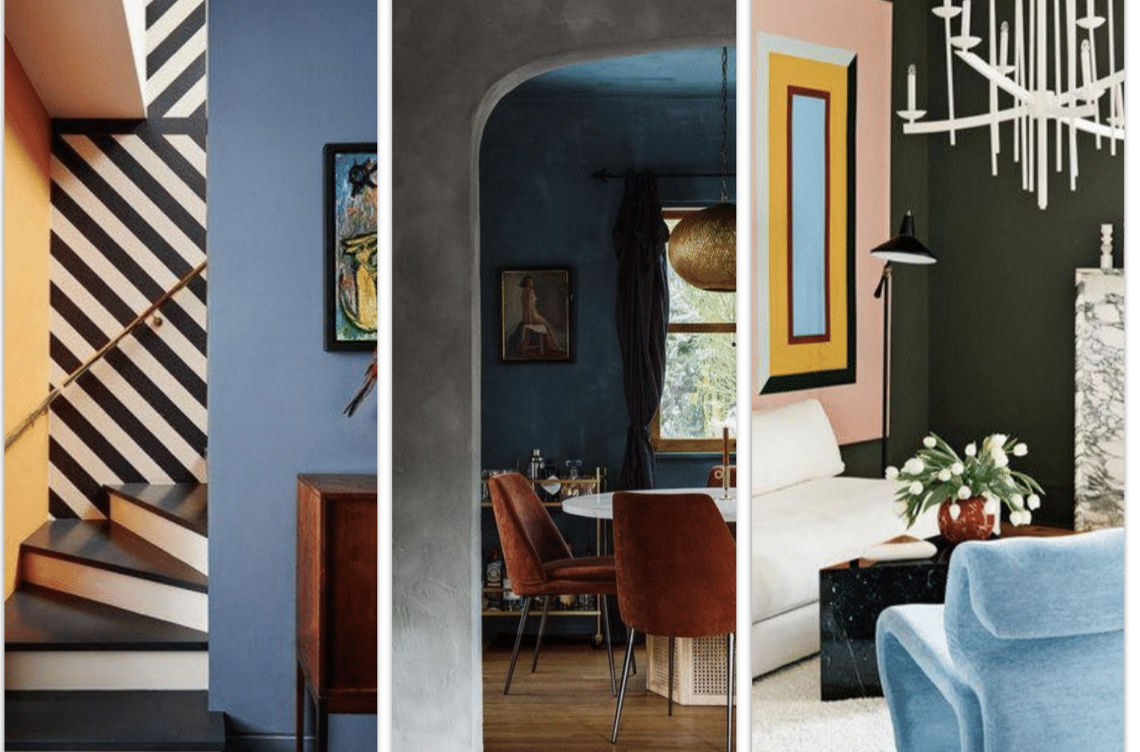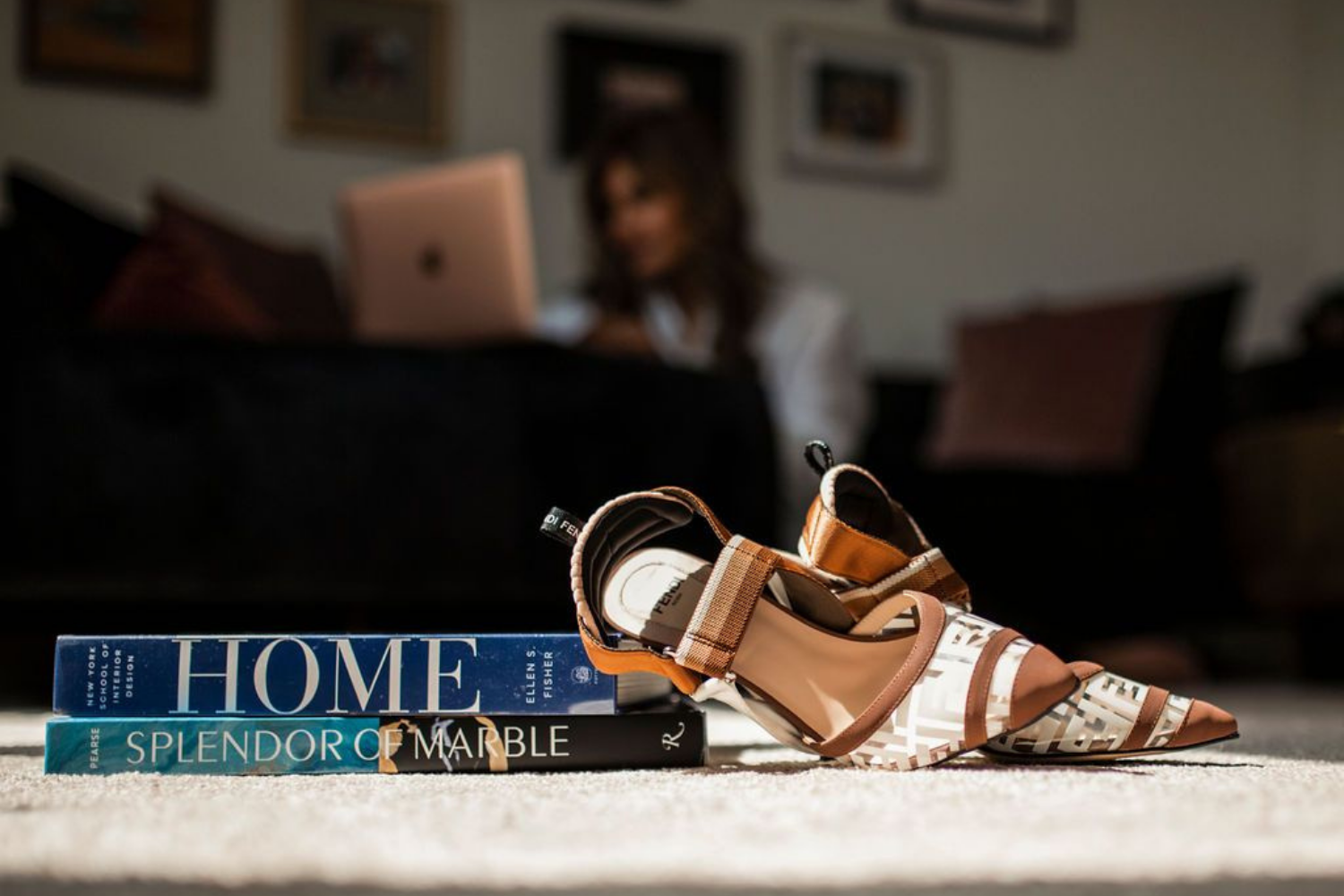If you’ve been following me for any amount of time, you know that I believe in a home that tells your personal story. One that merges the past (your culture and identity) with your present (your everyday lifestyle) and with the future (the life you’re building, the children you’re raising, the goals you want to achieve).
When these 3 layers meet, design transcends four walls and becomes a livable experience steeped in comfort, connection, and meaning! I know it, because I’ve tried it. 😉
With Thanksgiving and winter holidays coming up, I thought this month would be the perfect time to talk about using design to celebrate your heritage and bring it to life for your kids. For my family, this means staying in touch with our Indian and Arab roots while also embracing new traditions as first-generation and second-generation Americans.
Using my own home as an example, I’m sharing 5 tips for using design to craft meaningful, immersive cultural experiences at home. Whether your family recently immigrated or you have been rooted in the U.S. for as long as anyone can remember, you have heritage. You have stories. And those beautiful stories can come to life around you!
But first, just in case you’re new around here, come hear a little backstory…
My Story: A Life of New Beginnings
Where it all began: Although my parents are Indian, I was born in Kuwait, where my father ran a contracting business. I spent my early years immersed in the Arab and Indian cultures of the East, combined with the comforts and luxuries of the West. My most impressionable childhood memories are of lush fabrics, saturated colors and vibrant scents, heirloom furniture, a bustling family life, and heritage design expressed in centuries-old architecture.
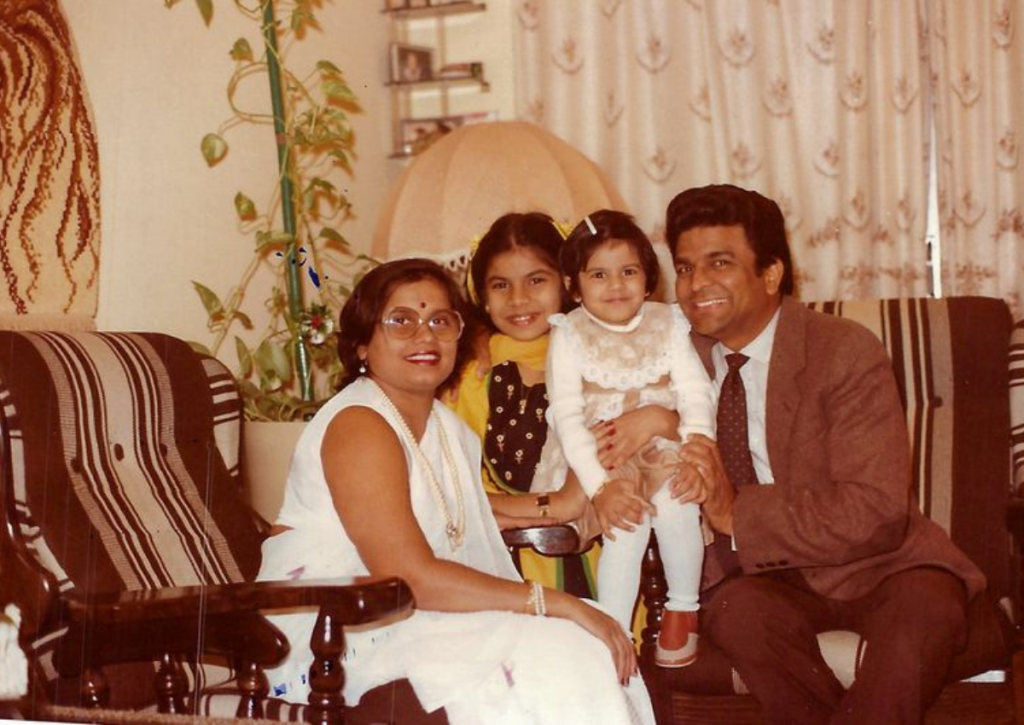
My parent’s living room during my childhood in Kuwait. We had these furniture pieces for 15 years! Solid walnut, reupholstered more than once, and brimming with family memories.
We lived in Kuwait for nearly a decade before my world changed overnight. The Gulf War started.
Rebuilding our lives: When the war started, we fled to India overnight and stayed there for 3 whole years, watching and waiting. When it was finally safe to return to Kuwait, which we had always called home, we did. It was in those years that I learned firsthand how to rebuild a life.
Moving to the U.S.: Fortunately, I opened the next new chapter in my life by choice. In 2000, I moved to New York for my undergraduate in Business and Finance, trading 120° desert heat for -10° winters. (That was a shock!) After graduation, I moved to the west coast for a job opportunity and found something even more unexpected: love. I met my husband (who is a second generation American and also Indian), and we married soon after!
Starting my own family: It wasn’t long before we started dreaming of a family of our own… and that was a journey in itself, too. After disappointment and an intense round of IVF, we were finally blessed with a beautiful daughter. As any parent knows, we immediately started thinking about how to raise her.
The answer? With love, freedom, and her heritage.
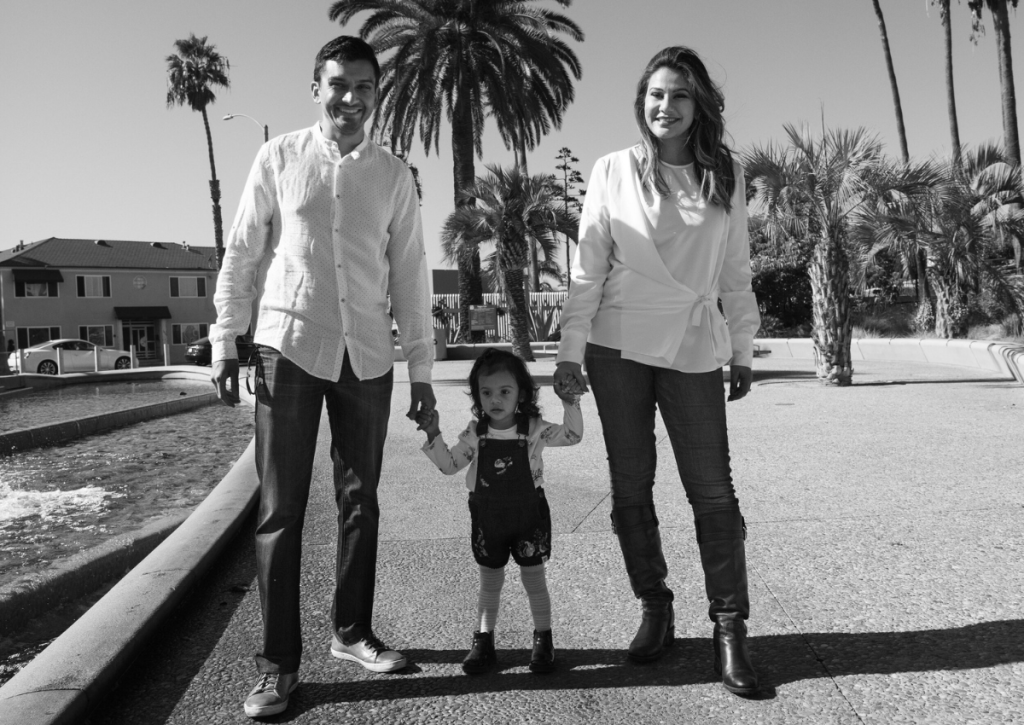 Which brings me to the 5 tips I’m sharing with you today. Although they are technically strategies we put into place for our daughter (age 0-5 is the most foundational for psychology and self-identity!), I can also say that it has helped my husband and I stay in touch with our roots, too. It feels special to us to share these stories as a family, and you can too. After all, you are still creating your story right now!
Which brings me to the 5 tips I’m sharing with you today. Although they are technically strategies we put into place for our daughter (age 0-5 is the most foundational for psychology and self-identity!), I can also say that it has helped my husband and I stay in touch with our roots, too. It feels special to us to share these stories as a family, and you can too. After all, you are still creating your story right now!
Tip 1. Weave cultural elements into your interior design
First, think about the colors, patterns, and items that evoke special memories for you. For example, whenever I see an Indian pattern, I’m immediately whisked back to my childhood home, to religious festivals and holidays with my family. It evokes memories of meaningful places and people.
That’s how I want my daughter to feel when she encounters elements of her culture. I don’t want her to just recognize them — I want her to feel that they are part of her, that she has memories to relive and share!
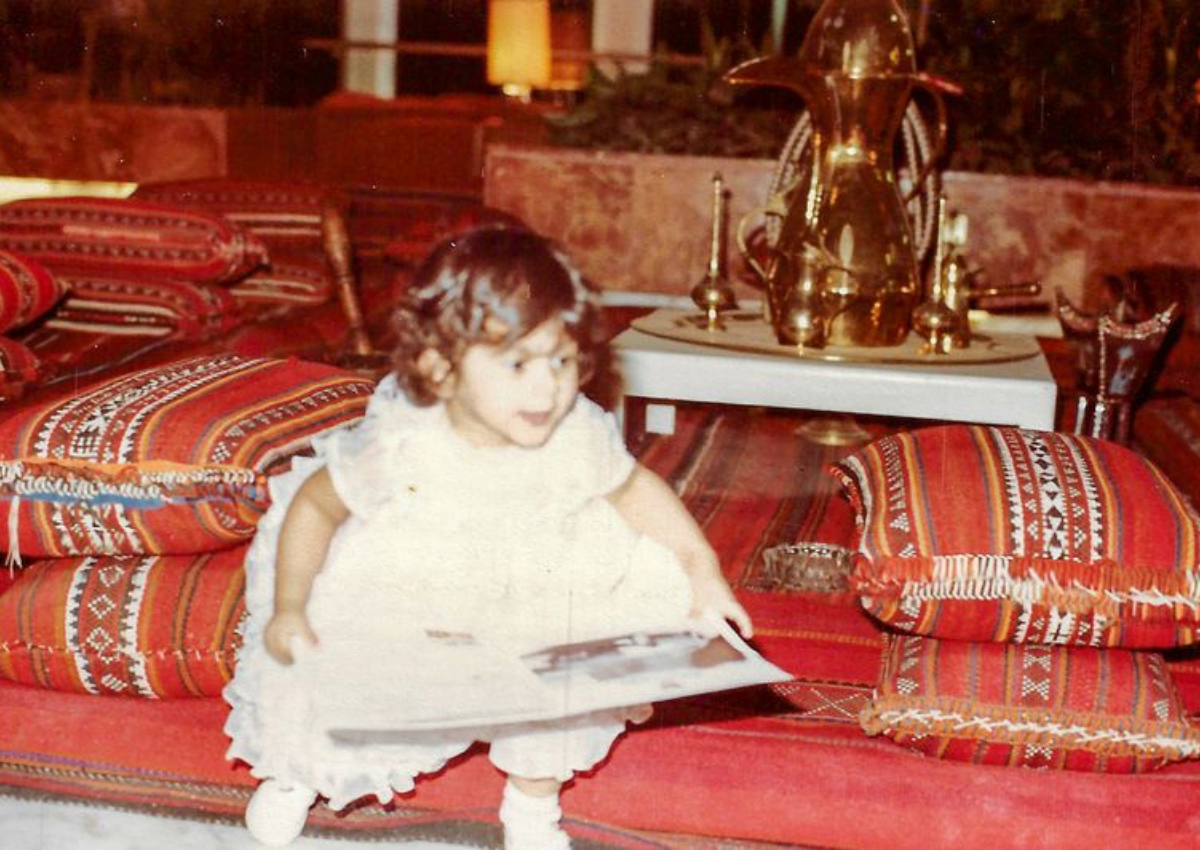 Young me at an authentic Kuwaiti dinner, where we dine from atop these traditionally patterned, handmade pillows and rugs. Those pillows each weigh 5-8lbs!
Young me at an authentic Kuwaiti dinner, where we dine from atop these traditionally patterned, handmade pillows and rugs. Those pillows each weigh 5-8lbs!
Cultural elements could include a motif on a fabric, displaying a souvenir in an artistic display case, integrating wallpaper, rugs and tile, or showcasing special collectables from our family history. Even color can be used to pique your senses in the same way we experienced them in our own childhoods. Case in point: I had our daughter do her tummy time on a Turkish rug with high contrast and patterns, and I saw her get lost in the patterns and designs in the rug! (It was one of those proud-parent moments, for sure.)
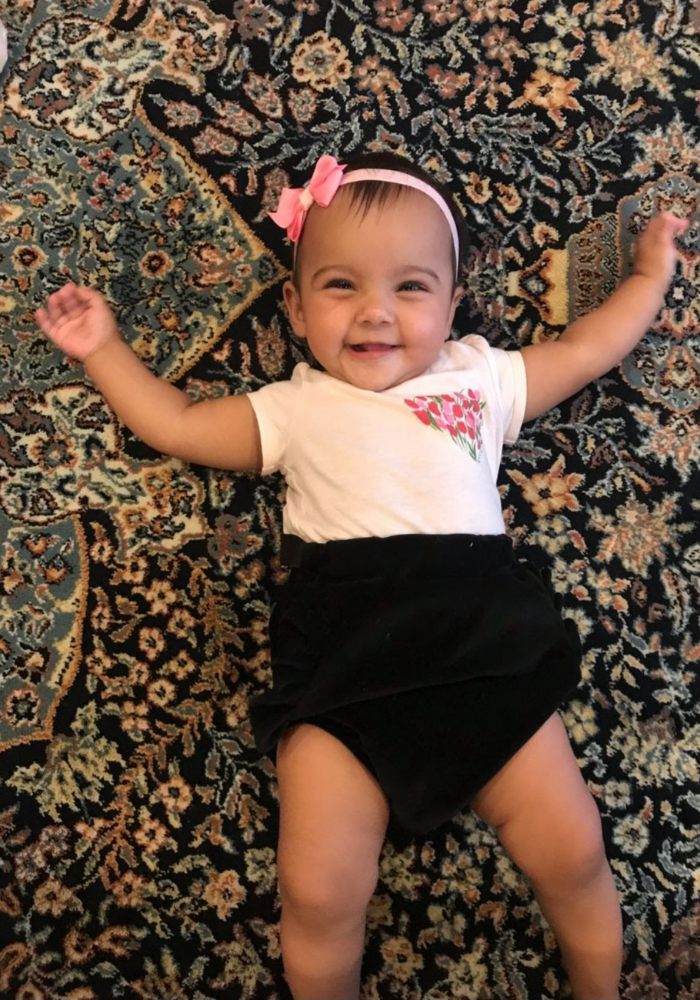 Interior design is also a tactile experience, so I included various interactive items from our culture, like a small baby tabla (musical instrument) with a baby drum set for her to play with. We also have a small temple in our home, where I have shown her and taught her elements of my religious heritage. The Hindu gods have a form (i.e. statues, photos, etc.) and even though she is fairly young to really understand, it all starts with a visual experience.
Interior design is also a tactile experience, so I included various interactive items from our culture, like a small baby tabla (musical instrument) with a baby drum set for her to play with. We also have a small temple in our home, where I have shown her and taught her elements of my religious heritage. The Hindu gods have a form (i.e. statues, photos, etc.) and even though she is fairly young to really understand, it all starts with a visual experience.
Again, you don’t have to be Indian or religious to steep your home in meaningful stories and a connection to something deeper. These tips can apply to anyone! Maybe every time you see a damask pattern it whisks you back to your grandmother’s sitting room. Or maybe the scent of roasting apples and the sound of your mother’s favorite holiday track is THE moment that signifies winter for your family.
Start paying attention to what feels special to you and start there. 🙂
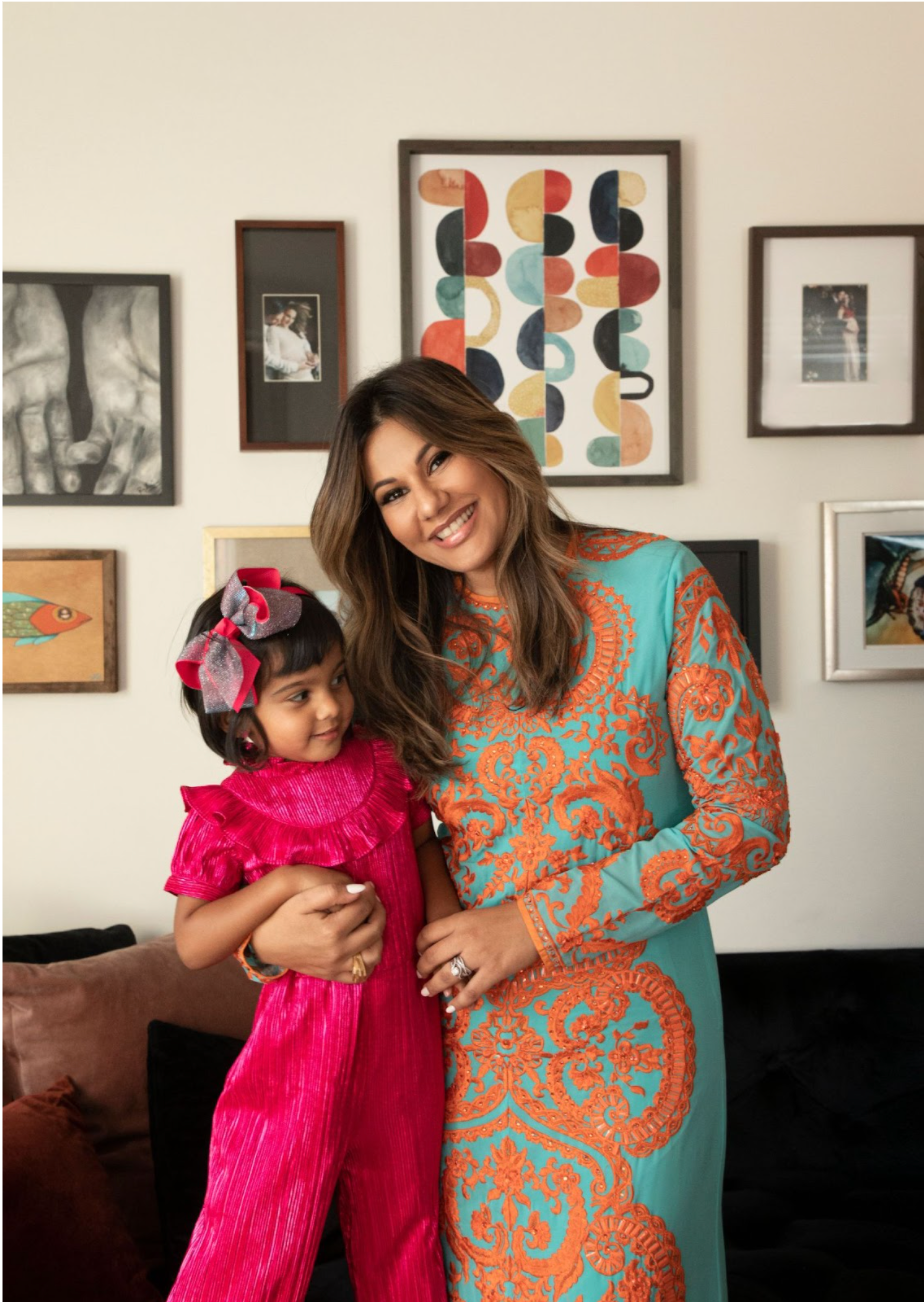 Tip 2. Decorate & celebrate special events
Tip 2. Decorate & celebrate special events
Events are highly memorable for kids, especially if it leads to or includes family traditions repeated year and year. That’s why it’s a good idea to be thoughtful about the decor you use and the way you celebrate — these memories, scents, items, and interactions are likely to stick with them for years to come!
For example, when we celebrate Diwali each year, I decorate and style our home with bright colorful accents, replacing my everyday throw pillows and blankets with Indian motifs and corresponding design elements, surrounding our home with unique artwork from Kuwait and Hyderabad. We step away from our typical everyday attire and dress in traditional Indian outfits with rich colors, textures, and symbolism.
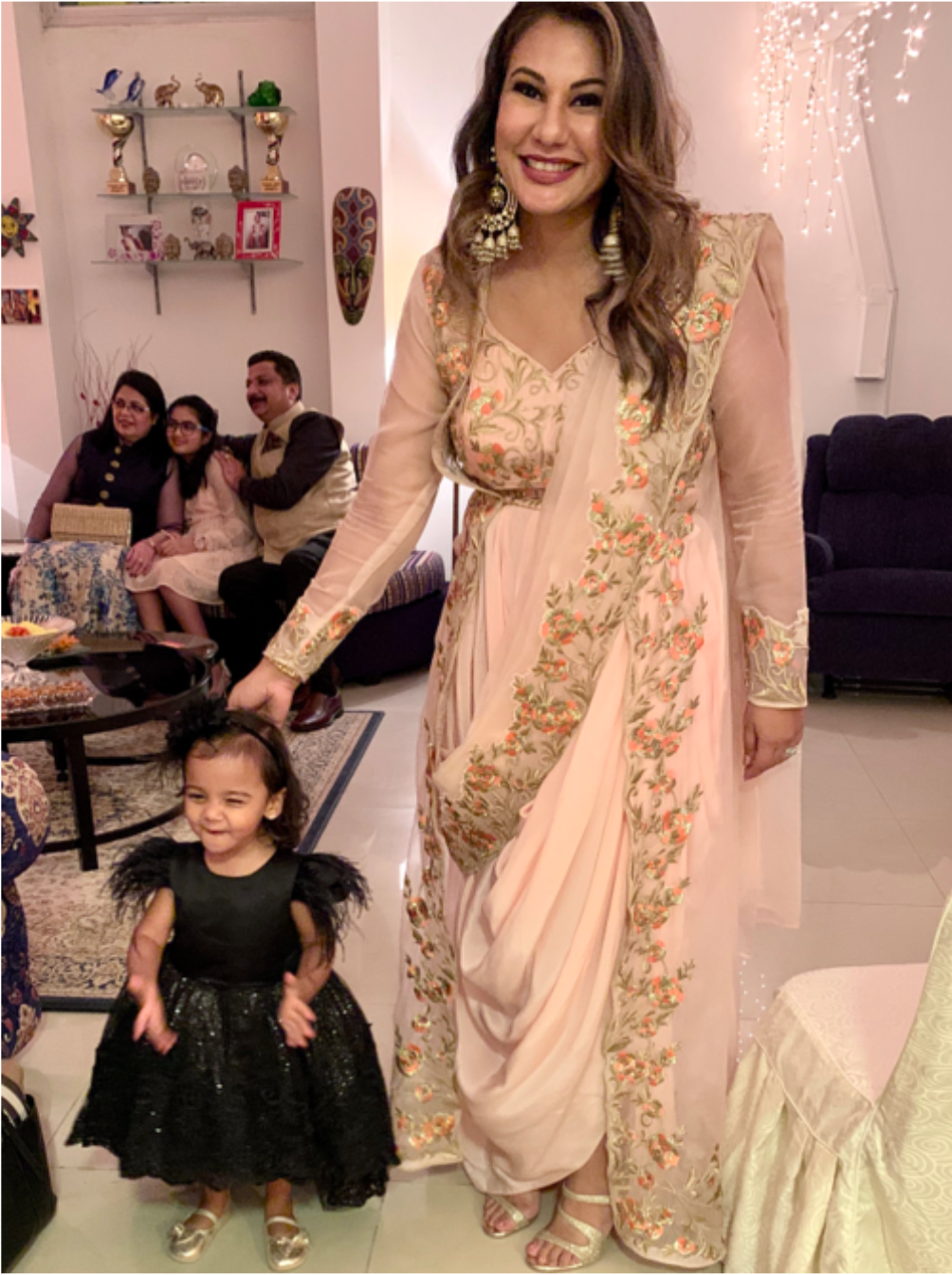 Whatever cultural holidays your family celebrates throughout the year — Christmas, Hanukkah, Chinese New Year, Ramadan, etc. — you can bring it to life in the same way!
Whatever cultural holidays your family celebrates throughout the year — Christmas, Hanukkah, Chinese New Year, Ramadan, etc. — you can bring it to life in the same way!
By the way, if you’re parenting with a partner, you don’t have to agree on everything! My husband is 2nd generation and is Punjabi, which means he celebrates a different religion. At times, it gets interesting with me bringing some old school cultural elements into our home’s design — and my husband questions it even before my daughter does… at times, I am educating them both! But he lets me do my thing, as he knows how much it all means to me, and I love learning about his cultural associations and ways of educating our daughter, too. It brings us closer.
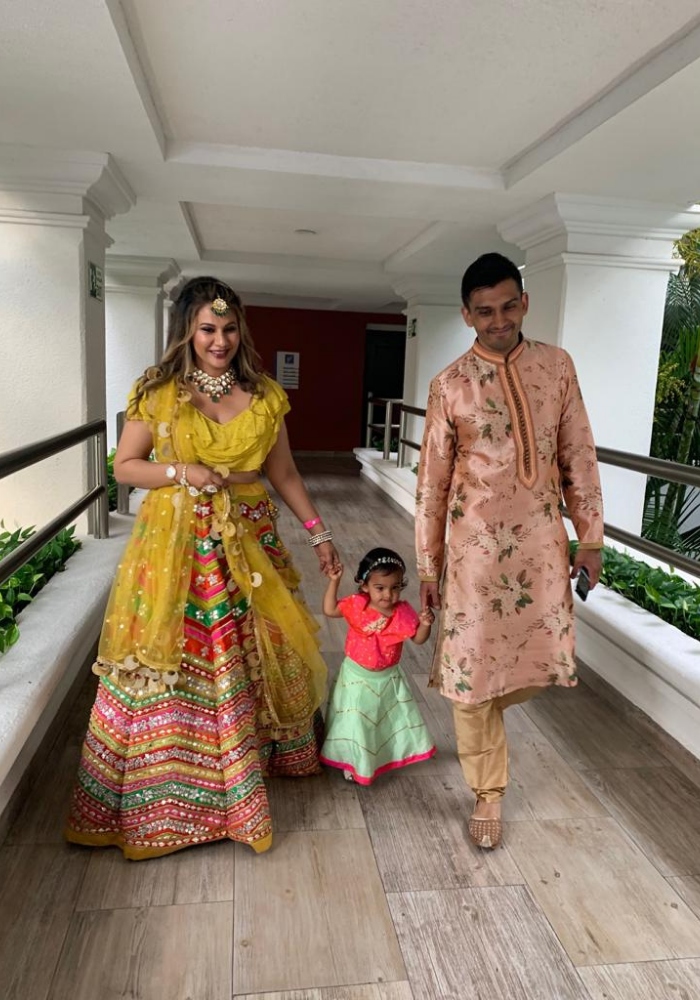 Tip 3. Bring objects + occasions to life with stories in design
Tip 3. Bring objects + occasions to life with stories in design
The third layer of helping her experience her culture in an authentic way is through storytelling. For most adults, incorporating cultural elements into our home design is enough to keep our heritage alive and thriving…
Children need context!
Even when she was too little to understand, I would walk around the house and show her those cultural elements and tell her stories about them, whether it was about patterns, the Hindu gods, her grandparents and great-grandparents, my own childhood stories, etc. Same with holidays and religious festivals.
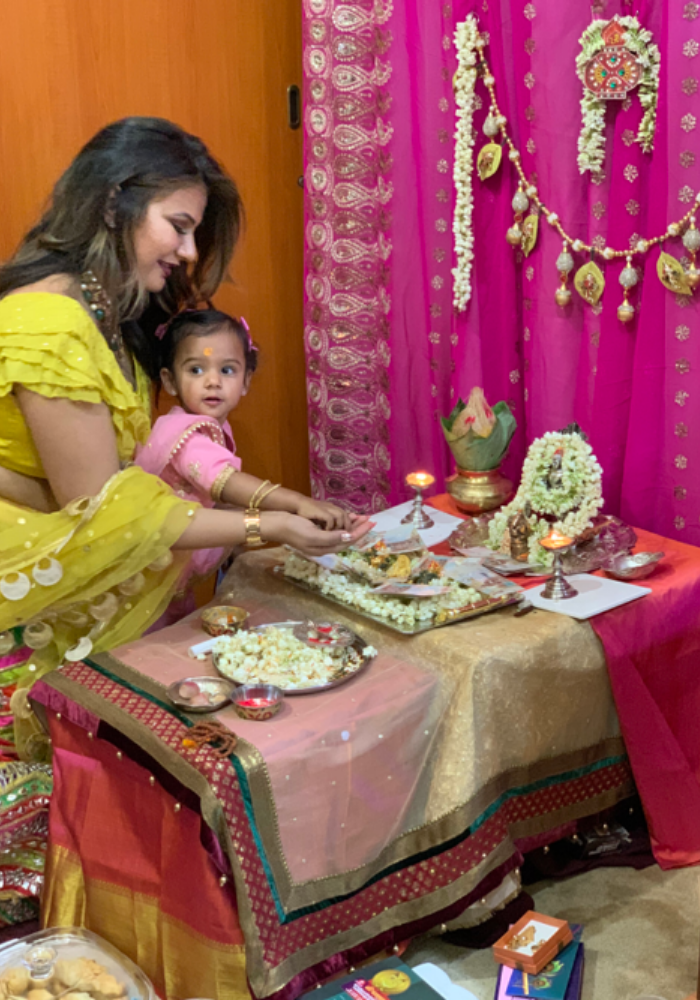 When she was a baby, I was never sure if any of this was making a difference, but both my husband and I continued to use design and storytelling in our own way. I still don’t know which childhood memories will stand out the most to her, or how she’ll view her heritage, but I do know that three years later, she now recognizes the images of the idols and associates them with religion, or she connects those images and patterns to me or my husband!
When she was a baby, I was never sure if any of this was making a difference, but both my husband and I continued to use design and storytelling in our own way. I still don’t know which childhood memories will stand out the most to her, or how she’ll view her heritage, but I do know that three years later, she now recognizes the images of the idols and associates them with religion, or she connects those images and patterns to me or my husband!
She notices them, and seeing her smile when she makes that connection to us is unbelievably priceless. It means that surrounding her with these elements DID make and impact and continues to do so!
What can you do? Share the stories behind those special pieces, along with your own childhood experiences. Yes, reading books and learning about heritage is always a great way to educate children (we have introduced several to our daughter since she was a baby), but to be able to associate a story with yourself and your own childhood makes heritage more than a story — it becomes real.
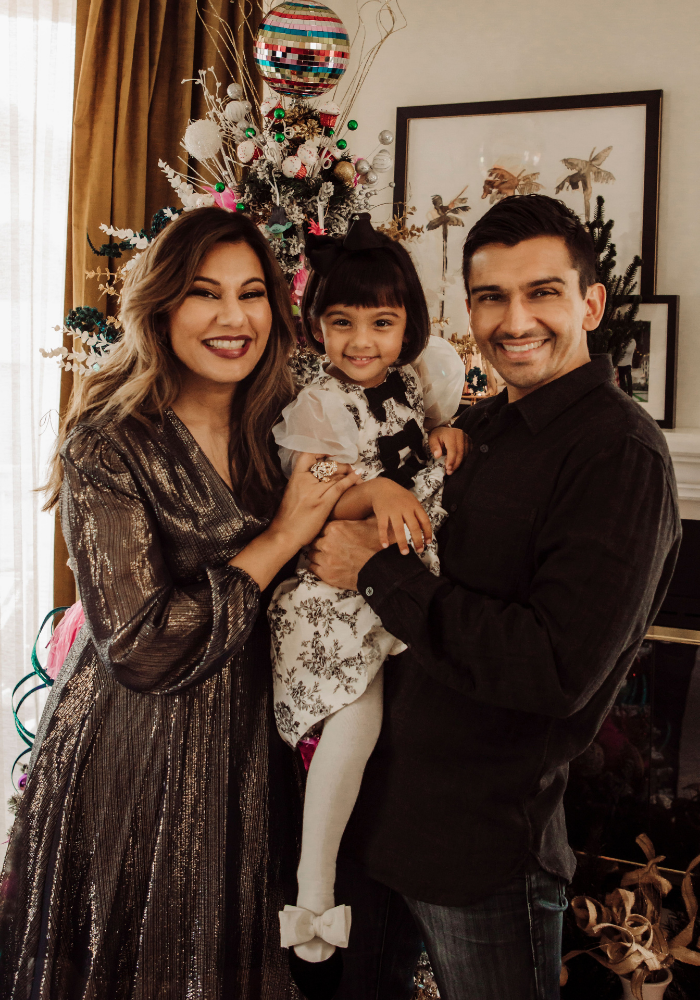 Tip 4. Adapt your environment and design to meet changing interests
Tip 4. Adapt your environment and design to meet changing interests
My final tip might sound a little counterintuitive, since I was just talking about creating traditions, but it’s also important to remember that kids’ interests change drastically throughout their lives. And if there’s anything I know about parenting, it’s about trying to row with the current, not against it.
For example, our daughter loves princess dresses, so I now include Indian and Arabic dresses in her dress-up closet, each with a magical story behind it. With so many festivals in our culture, this is one way I get to celebrate and show and teach her — and she loves it!
 Tip 5. Keep the door open
Tip 5. Keep the door open
This one is admittedly a personal parenting choice — well, they all are, but this one in particular! Keep an open door when it comes to embracing culture. For example, I could easily have halted the Disney princess obsession and tried to force her to embrace something else. But what would that achieve? Probably the exact opposite — kids want what they can’t have!
Plus, our heritage isn’t something that can only exist at the exclusion of everything else. She’s also American, has friends from different backgrounds, and will be influenced by what is around her, too. And that’s okay!
I want her to have the freedom to decide for herself what’s meaningful to her. Even if she rejects our heritage at some point (who knows what the rebellious teen years will bring!), I feel grounded that we have taken the steps to ensure that her heritage will always be part of her childhood and available to her if and when she chooses.
After all, we are each a blend of different places, cultures, colors, and stories. Our stories will never be the same, and that’s okay. No two stories are the same. And if you ask me, that’s what makes life so beautiful.
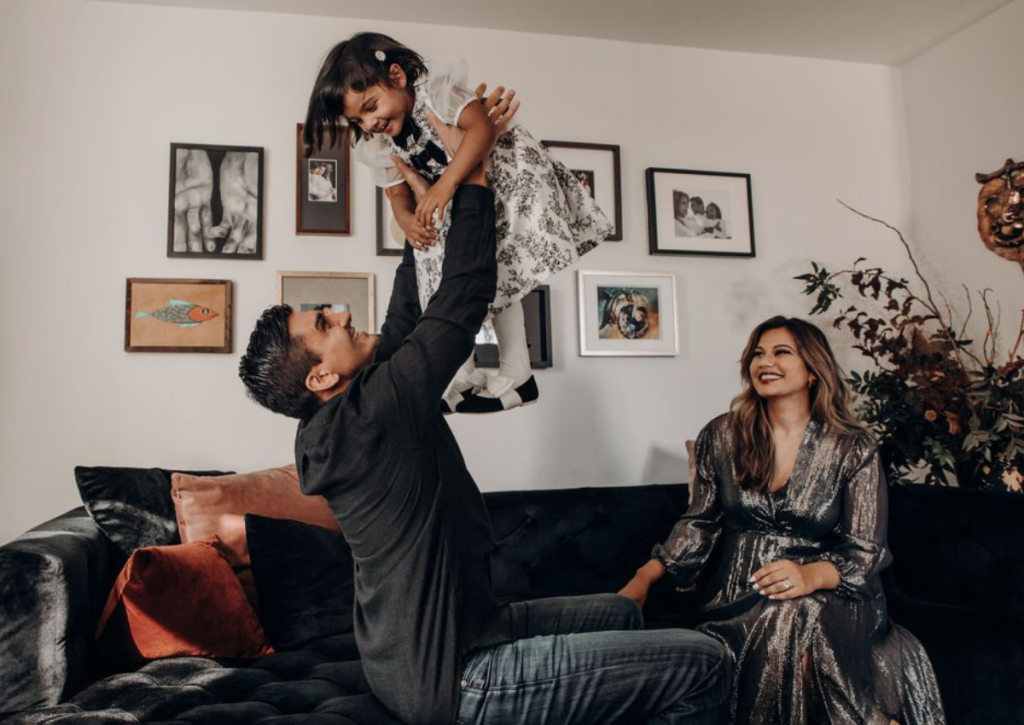 If you’re looking for help designing interiors that do all of this and more, reach out to me here + I would be honored to help. Until then, I wish you all the joy, connection, and comfort this holiday season can bring. From my family to yours, happy holidays.
If you’re looking for help designing interiors that do all of this and more, reach out to me here + I would be honored to help. Until then, I wish you all the joy, connection, and comfort this holiday season can bring. From my family to yours, happy holidays.
Xoxo,

